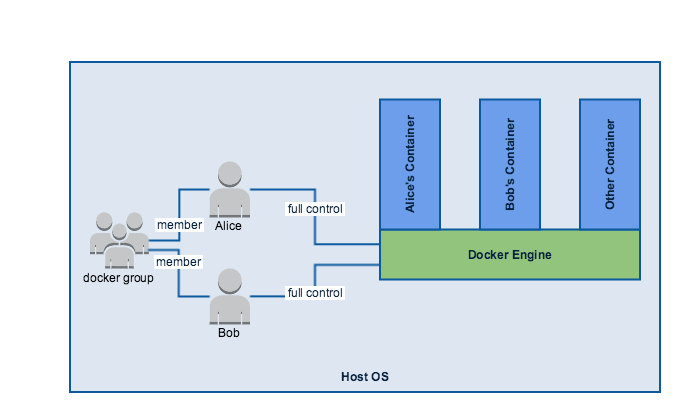

Touch: cannot touch `/host/foo.txt': Permission denied

$ docker run -rm -v "$(pwd):/host" usercontainer touch /host/foo.txt These files cannot be accessed by normal apps on the host OS because of permission problems.įor example: on a Linux machine (not on macOS see below), let's run a root container which writes a file on the host: Many containers run as root, creating root-owned files on the host OS's filesystem. You can't modify these files with your host text editor without jumping through some hoops. When they write to files on the host filesystem, they create root-owned files on your host filesystem. Files which may be read/written by other apps later. Key takeaway: development environments often read or write files from/to the host OS filesystem.
DOCKER RUN AS ROOT IN CONTAINER CODE
(For frameworks/languages where this is applicable:) If the source code on the host OS changes, then the app inside the container live-reloads the new code.Inside the container, it launches the app, which runs until the user requests abortion.The compilation products, or cache files, are stored under the project directory. (In case of compiled languages:) Inside the container, it compiles the source code located in the project directory.It mounts the project directory (on the host filesystem) into the container.Here's what such a Docker-Compose environment often does: Let's say that you setup a development environment for your Ruby, Node.js or Go app, using Docker-Compose. Perhaps a little counter-intuitively, many development environments often also fall under this category.
DOCKER RUN AS ROOT IN CONTAINER PORTABLE

This post describes what causes the host filesystem owner matching problem, and analyzes various solutions and their caveats. "It works on my machine" is kind of embarrassing when you distribute a development environment to a coworker, who then runs into issues. As a result it's easy to implement a solution that only works for some, but not everyone. Solutions are available, but they have major caveats. It's annoying having to deal with wrong file permissions!

Containers shouldn't run as root in the first place! This is the host filesystem owner matching problem. Sometimes they can't access files on the host machine at all. Within this use case, containerized apps often generate files that are not owned by your local machine's user account. I call this the "container-as-OS-app" use case. They are increasingly used on the desktop: as CLI apps or as development environments. For more information, see Manage data streams on the AWS IoT Greengrass Core.Containers are no longer only used on servers. You use to interact with the stream manager component. This component enables you to processĪnd transfer high-volume IoT data to the AWS Cloud. To manage data streams in Greengrass components. URI: s3:// DOC-EXAMPLE-BUCKET/artifacts/.ListS3Buckets/1.0.0/list-s3-buckets.tar ".PublishToIoTCore:pubsub:1": /list-s3-buckets.tar' "ComponentDescription": "Uses interprocess communication to publish an MQTT message to IoT Core.",


 0 kommentar(er)
0 kommentar(er)
